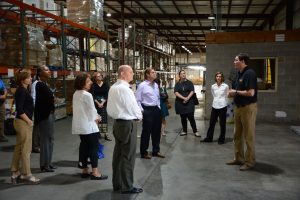
Have you ever wondered how United Way of Central Alabama distributes the money raised through its annual campaign?
United Way of Central Alabama makes it happen through a process called Visiting Allocations Teams (VAT).
How VATs work
United Way of Central Alabama set a fundraising goal of $38 million to help support needed programs and services of its 80 partner agencies and initiatives.
That’s where VATs come in.
Hundreds of volunteers evaluate the nonprofits receiving funds
Each year, at least 500 volunteers come together to form 23 Visiting Allocation Teams with roughly 22 members on each team. VAT members represent a wide range of people with various racial, ethnic, socioeconomic, and cultural backgrounds along with different lifestyles, experiences, and interests.
All teams have a Community Impact staff person and a VAT chairperson to guide the process. Each chair has years of experience of serving on a Visiting Allocations Team and has extensive knowledge of the process.
Community volunteers drive
Scott Powell, Executive Director of Alabama Head Injury Foundation, a United Way agency since 1990, describes why it is important to have the community decide where the funds are allocated.
“You have got this wonderful mix of people who are influential members of the community and successful business people, who are volunteering their time to come ask questions, probe deeper, to make sure you (in Powell’s case the Head Injury Foundation) are going to do the things you say you are going to do,” said Powell. “As someone receiving funds, you have got to have your act together. It (VAT) is an extremely thorough process that forces agencies to look deep inside themselves. Are we doing the things we should in the community?”
Meetings and site visits
Each VAT team meets three times for a total of 10-12 hours. In the first meeting, members get to know each other, briefly discuss the three agencies they will be visiting and decide on dates for the remaining two sessions.
During the second meeting, each team reviews and discusses their assigned agencies in detail. Team members can also ask questions they have discovered while reviewing the application and documents submitted by each organization.
All-day site visits to each United Way agency is the essence of the third team meeting. Each agency tour is about an hour long. Site visits are an excellent opportunity for each organization to inform and educate VAT members about the services they provide. After visiting the agencies, the team chair will hold a caucus to discuss the team’s view of agencies, services offered, and impact made within the community.